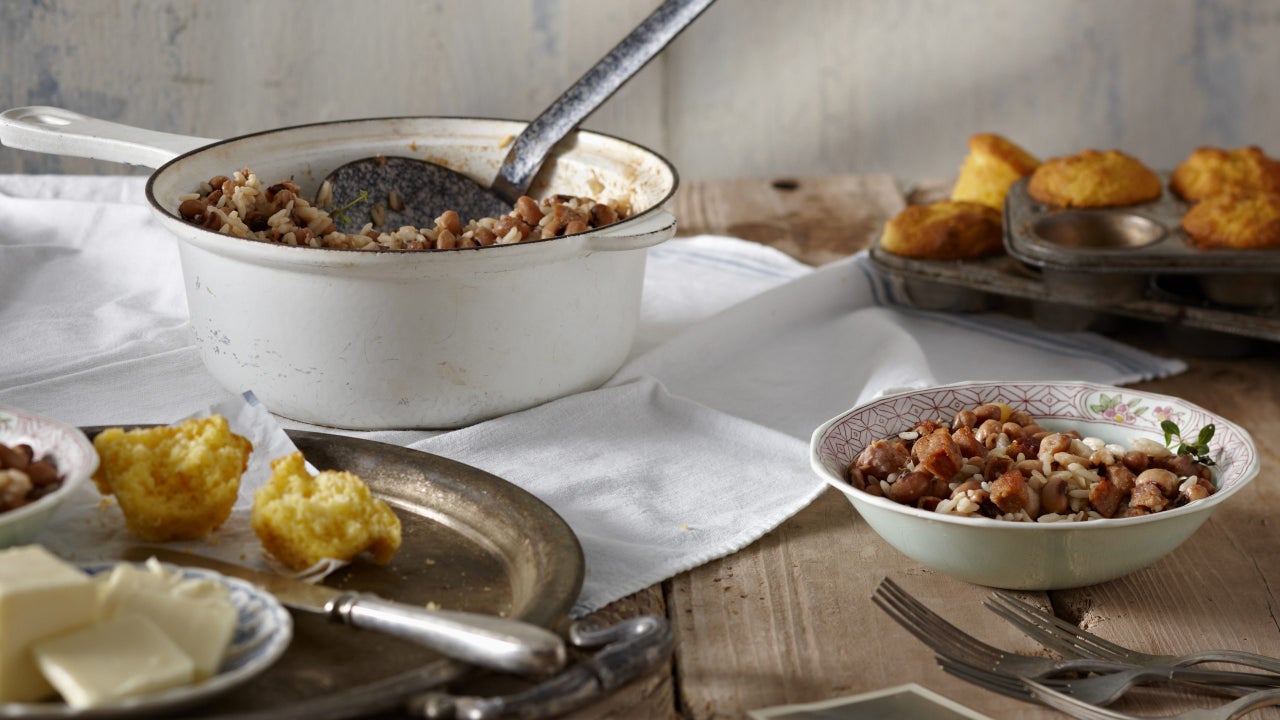
Once the leftovers are packed away and the last scoop of the baked macaroni and cheese has been taken, Black households across America begin preparations to bring in the New Year. From the washing of floorboards to the soaking of greens, the aroma of freshly baked cornbread and stewed black eyed peas remind us of cherished moments with grandparents and extended family in town for the holidays. Now these traditions which are passed down from generation to generation, are known to originate from African origin.
In recent years, series such as Netflix’s High on the Hog: How African American Cuisine Transformed America have brought to light the connection between food traditions in The United States and the African Diaspora. Yet, a point of origin that is often overlooked is Hoodoo.
Described as the religio-spiritual practice of the Black American ethnic group, by Emanuel Basnight, a Hoodoo practitioner, researcher and teacher. The ritual of preparing food is essential to the practice. “It’s that understanding. From the very basics of growing a seed to harvesting. It’s the understanding of our existence in the world and where we stand in relation to the flora, the fauna, the spirits, and the creator,” said Lissah Ryaan Mason, root worker, herbalist, and birth worker.
An unintended impact of the pandemic and protests around the deaths of George Floyd and Breonna Floyd was resurgence of African Traditional Religions, such as Ifà, Lucumi, Santerià, and Diasporic Traditional Religions like Hoodoo. Basnight, much like Mason, characterized this shift as “Black people were searching for something that we struggle to receive from Abrahamic religions, and that is meaning people were looking for anything to explain the meaning behind what we were experiencing.”
Mason recalled a conversation with her mother about the comparisons between Hoodoo and Christianity. The usage of water to baptize. The ritual of Passover. The Holy Spirit. The belief that everything comes from the Creator. Although New Year’s Eve is not a religious holiday, the tradition of attending church on New Year’s Eve, followed by a meal of “Hoppin John’, collard greens with hog jowls, and ribs,” comes from Watch Night.
According to the National Museum of African American History and Culture, the night, also known as Freedom’s Eve, occurred on December 31, 1862 where “enslaved and free African Americans gathered, many in secret, to ring in the new year and await news that the Emancipation Proclamation had taken effect.” For generations, African Americans have used New Year’s Eve to commemorate their freedom, strength, and resilience through worship to the Creator and food.
Compared to Thanksgiving and Christmas, where debates emerge over which family member makes the best mac and cheese, the menu for New Year’s Eve consists of slow cooked greens, meats, and legumes which presents a moment for prayer and introspection. “Those foods play a specific role in setting the tone for the going out of the new year and the ushering in of the new year,” said Basnight. “You take the meaning plus the action for desired outcome and intentional outcome. That is why I would say that moment in Black culture is very much Hoodoo.”
For example, the act of cleaning one’s house to bring in The New Year is a cleansing ritual to open space for blessings to come in the following year. Sweeping the house back to front. Removing dust from the corners. Getting rid of old things. Wearing something new. A male family member being the first to walk into the house. Money in the wallet.Several of these practices have ties to ritualistic practices in Africa, according to Mason.
“I found that to be a beautiful connection, an example of retention of African Indigenous culture, now being adapted to this European interruption that is colonial America,” she said. Though items such as collard greens, which originated from Europe, are not African in nature. The ways in which African Americans have prepared them is. “The principle of consuming something for protection and consuming for material and spiritual abundance or luck, I feel is very West African and it’s not something that we let go,” said Basnight.
Though separated by oceans and times, the gift and joy of being African American is the ability to pay homage to our ancestors through the creation of our own distinctive traditions like Hoodoo. So when you look at your plate on New Year’s Eve and see collard greens, which wealth, black-eyed peas, rice, which symbolizes sustenance, cornbread, which symbolizes gold, and yams, which represents fertility; remember the spiritual heritage of African Americans and the ancestors who made it possible for you to be here today.








